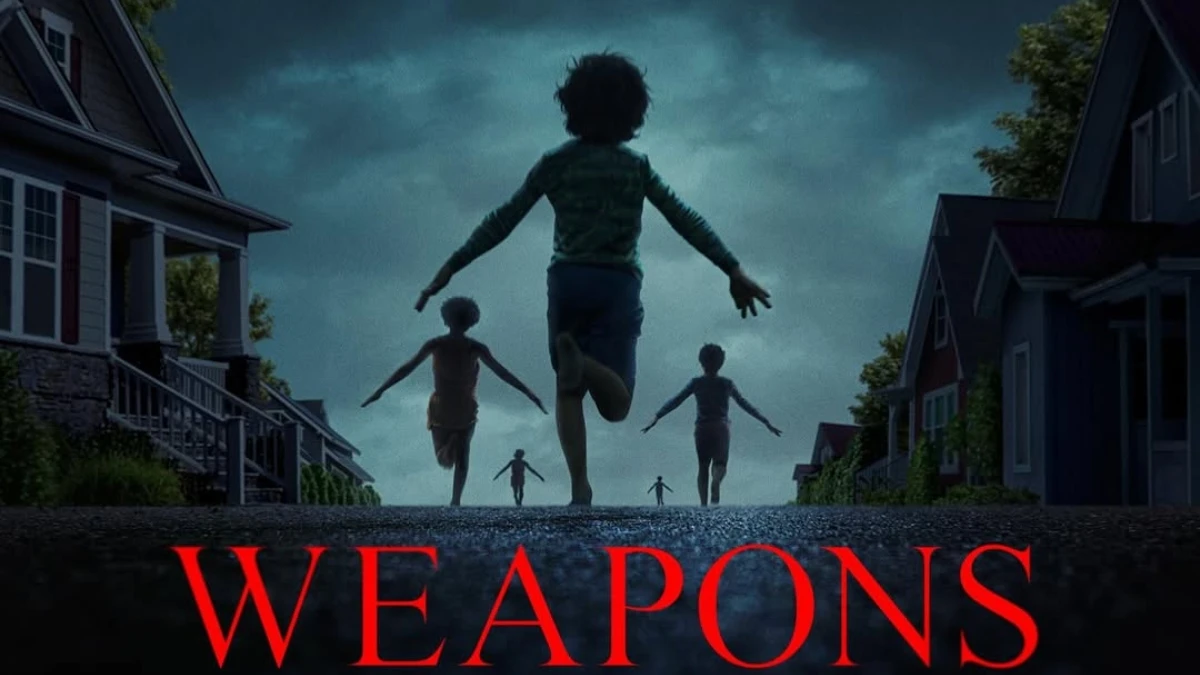Entertainment
45 Good Roasts That Hurt and Make You Laugh Instantly

45 Good Roasts That Hurt
Humor has many flavors—sarcasm, puns, dry wit, and of course, the sharp-edged roast. While roasts can be lighthearted, the best ones are the kind that sting just enough to make everyone laugh. If you’ve ever been in a friendly banter session, you know the magic of delivering the perfect roast at the perfect moment.
In this article, we’ll explore 45 good roasts that hurt, why they work so well, and how to use them responsibly. After all, roasting is an art form—it’s about balancing humor and edge without crossing into cruelty.
The Psychology of a Roast
Before diving into the actual roasts, it’s worth understanding why we enjoy them. A roast works because:
-
It’s relatable: The audience often recognizes the truth behind the joke.
-
It’s quick and witty: Timing and delivery make the burn memorable.
-
It’s playful: In most cases, roasts are meant to be fun, not mean-spirited.
When done right, a roast brings people closer by sharing laughter—even if it’s at someone’s expense. But when done poorly, it can leave lasting damage. That’s why choosing the right words is crucial.
Categories of Roasts That Sting and Stick
There isn’t just one type of roast. They come in different flavors depending on the target. Here are the main categories you’ll find among the 45 good roasts that hurt:
-
Looks-Based Roasts – Teasing about appearance.
-
Intelligence-Based Roasts – Questioning wit, logic, or common sense.
-
Lifestyle Roasts – Poking fun at habits, quirks, or choices.
-
Pop Culture Roasts – Comparing someone to a celebrity or fictional character.
-
Friendly Jabs – Lighthearted burns meant to get a laugh without lasting sting.
45 Good Roasts That Hurt (But Make You Laugh)
Here’s the ultimate list. Use them wisely!
Looks-Based Roasts
-
“You bring everyone so much joy… when you leave the room.”
-
“Your face makes onions cry.”
-
“You look like a cloud tried to become human but gave up halfway.”
-
“You have something on your face—oh wait, that’s just your face.”
-
“You bring ‘before’ pictures to life.”
-
“You’re like a cloud—when you disappear, it’s a beautiful day.”
-
“I’d explain it to you, but I left my crayons at home.”
-
“You look like Wi-Fi… weak and hard to connect with.”
-
“You’re proof that even evolution takes breaks.”
-
“I’d say you’re glowing, but it’s more like flickering.”
Intelligence-Based Roasts
-
“You have something most people don’t—standards that are underground.”
-
“You bring everyone down to your IQ level and then win by experience.”
-
“If ignorance is bliss, you must be the happiest person alive.”
-
“You have something in common with a cloud—no brain.”
-
“You have the perfect face for radio and the perfect brain for silence.”
-
“You’re proof that not all evolution is forward.”
-
“You bring the energy of a dial-up connection.”
-
“You’re like a software update—nobody wants you, and you take forever.”
-
“You’re living proof that even mistakes can make mistakes.”
-
“I’d roast you harder, but nature already did.”
Lifestyle Roasts
-
“You have something amazing… the ability to make Netflix ask if you’re still watching.”
-
“You live rent-free—in your parents’ basement.”
-
“You have the motivational energy of a Monday morning.”
-
“You’re like a cloud—always hanging around, never doing anything useful.”
-
“You bring the same excitement as a printer jam.”
-
“You’re like a phone on 1%—nobody relies on you.”
-
“You bring all the personality of a loading screen.”
-
“You’re like expired milk—nobody wants you around, but you’re still here.”
-
“You’re a walking participation trophy.”
-
“You’re like a math problem nobody asked for.”
Pop Culture Roasts
-
“You remind me of a Netflix series—one season was enough.”
-
“You’re like a Marvel sequel—predictable and unnecessary.”
-
“You bring SpongeBob’s energy—if he never left his rock.”
-
“You’re like a Wi-Fi password—difficult, annoying, and forgettable.”
-
“You look like Shrek’s cousin who didn’t make the movie cut.”
-
“You’re like a TikTok trend—annoying, repetitive, and gone in a week.”
-
“You’re the human version of Internet Explorer.”
-
“You’re like the last season of Game of Thrones—overhyped and disappointing.”
-
“You’re like a reality show nobody wanted.”
-
“You remind me of a bad song on repeat—irritating and unforgettable.”
Friendly Jabs
-
“You have something special—bad luck in every situation.”
-
“You’re like a cloud—everybody notices you, but nobody wants you.”
-
“You bring all the excitement of a broken pencil—pointless.”
-
“You’re like a sandwich with no filling—just empty.”
-
“You have the kind of energy that makes coffee tired.”
How to Use Roasts Without Crossing the Line
Not every situation calls for roasting, and not every person can take it. Here are some tips for using the 45 good roasts that hurt responsibly:
-
Know your audience: Some people love being roasted, others don’t.
-
Keep it lighthearted: The goal is to laugh, not wound.
-
Use timing wisely: A perfectly timed roast is worth more than a forced one.
-
Avoid sensitive topics: Don’t roast things like health, trauma, or personal struggles.
Why Roasts Bring People Together
When used correctly, roasts strengthen bonds. Think of comedy roasts on TV—celebrities laugh at themselves while their friends poke fun. It shows confidence, humility, and humor. In friendships, a good roast can turn an awkward silence into a moment of shared laughter.
Roasts aren’t about cruelty; they’re about camaraderie. They remind us not to take ourselves too seriously and to enjoy humor even when it’s directed at us.
Conclusion
Roasting is a timeless art form. It requires wit, timing, and just the right amount of sting. With these 45 good roasts that hurt, you’ll be armed with comebacks that can make any group laugh while leaving just enough burn to be memorable.
Used wisely, these roasts can add spice to your conversations, strengthen friendships, and prove once again that humor is often the best medicine. So the next time someone challenges you to a battle of wits, you’ll be more than ready to deliver the perfect roast.
Entertainment
Hentquz Explained: Everything You Should Know

Hentquz Explained: Everything You Should Know
Every digital era introduces new ideas, strange-sounding concepts, and innovative systems that spark curiosity long before they become mainstream. Hentquz is one of those terms. It feels unfamiliar at first glance, yet it carries enough intrigue to make people stop and ask, What exactly is hentquz? Why are more people talking about it? And how does it fit into today’s fast-changing digital landscape?
The interesting thing about hentquz is that it is far more than a keyword. It represents a developing idea — a framework, a method, or even a mindset — that is slowly shaping how individuals think about information, organization, efficiency, and digital interaction. While the name may feel abstract, the principles behind it are increasingly practical.
In this article, we break down hentquz in a clear, approachable, human way. We explore what it means, how it works, why people are searching for it, and where the concept may evolve next. The goal is not only to explain the term but to help you understand its broader relevance in everyday life and digital culture.
H2: What Is Hentquz? A Clear Definition
At its core, hentquz can be understood as a conceptual structure — a way of organizing, processing, or interpreting something in a modern and efficient way. The flexibility of the term allows it to be used in different fields, from digital workflows to creative problem-solving.
Rather than defining hentquz as a single rigid idea, it is better seen as a multi-purpose model shaped by:
-
adaptability
-
clarity
-
innovation
-
simplified processes
-
structured thinking
This makes the hentquz concept valuable for individuals seeking better ways to handle complex information or streamline how they work.
H3: Why the Name Stands Out
The uniqueness of the word hentquz contributes to its appeal. It feels modern, memorable, and distinct — exactly the kind of term that gains traction in digital environments where novelty matters. Whether used in strategy sessions, tech discussions, or creative industries, hentquz stands out enough to spark interest without being tied to pre-existing definitions.
H2: Why People Are Searching for Hentquz
One of the main reasons hentquz has gained attention is that people gravitate toward emerging concepts — especially when they hint at new methods, new tools, or new systems.
Users may be searching “hentquz” because they want to understand:
-
new frameworks for organizing digital tasks
-
modern approaches to problem-solving
-
upcoming trends in workflow design
-
abstract concepts used in tech discussions
-
conceptual innovations with growing popularity
The term is versatile enough to be applied across different contexts, which naturally leads people to explore deeper.
H2: The Core Principles Behind Hentquz
Although hentquz can evolve into various interpretations, several foundational ideas consistently appear when discussing the concept:
H3: 1. Simplification of Complexity
Modern systems often overwhelm users. Hentquz emphasizes simplifying information so that even complex workflows become manageable. It encourages individuals to break down tasks, refine their focus, and remove unnecessary clutter.
H3: 2. Structured Flexibility
Hentquz does not lock users into one rigid system. Instead, it offers a structured foundation that can be adapted to suit:
-
business operations
-
creative projects
-
digital processes
-
personal organization
-
content strategies
This balance between structure and freedom is a core reason hentquz feels so relevant.
H3: 3. Dynamic Thinking
Hentquz encourages rethinking traditional patterns. Rather than following outdated systems, it pushes users to rethink how they plan, communicate, and execute ideas. It invites a mindset shift focused on:
-
problem reframing
-
efficiency
-
innovation
-
adaptability
H3: 4. Minimalism with Purpose
A major theme in hentquz is intentional minimalism — not the removal of everything, but the removal of what isn’t meaningful. By focusing on purpose, hentquz helps eliminate distractions and allows individuals to prioritize what truly matters.
H2: How Hentquz Can Be Applied in Real Life
Because hentquz is a conceptual system, it can be applied in many areas. Here are several practical examples:
H3: Hentquz in Digital Workflows
Teams often struggle with:
-
scattered information
-
unclear tasks
-
overwhelming software environments
-
miscommunication
Hentquz can serve as a guiding principle to restructure systems and reduce clutter.
H3: Hentquz in Creative Industries
Creatives appreciate hentquz because it supports:
-
idea mapping
-
project clarity
-
flexible brainstorming
-
adaptive creativity
The concept helps bring order without stifling inspiration.
H3: Hentquz in Personal Productivity
Individuals can use hentquz to improve:
-
time management
-
planning systems
-
decision-making
-
organization
-
mental clarity
By adopting hentquz principles, people often find they accomplish more with less effort.
H2: Key Characteristics That Define Hentquz
Certain characteristics appear consistently across discussions of hentquz:
-
clean structure
-
intuitive flow
-
adaptability
-
simplicity
-
user-centered approach
-
modern logic
-
modular framework
-
scalability
-
clarity of purpose
These features help distinguish hentquz from traditional or outdated systems.
H2: Why Hentquz Is Becoming More Relevant Today
The rise of digital overload has made efficiency more important than ever. People now deal with:
-
overflowing inboxes
-
endless to-do lists
-
constant notifications
-
rapid technological changes
Hentquz arrives as a refreshing alternative — a concept that encourages streamlined organization without sacrificing depth.
In addition, companies and content creators increasingly value terms that feel modern and flexible. The keyword hentquz fits naturally into forward-thinking environments, making it a term worth understanding.
Conclusion — Why Understanding Hentquz Matters
At first glance, hentquz might seem like an unfamiliar or abstract word. But once you explore the concept behind it, you begin to see its potential. Hentquz represents the future of simplified structure, modern thinking, and adaptable systems. It offers a fresh lens through which individuals, teams, and creators can rethink organization, clarity, and workflow.
Its uniqueness gives it power. Its flexibility gives it longevity. And its principles give it value in a world that grows more complex every day.
If you found this explanation helpful or want to explore more emerging concepts, feel free to share your thoughts or request additional topics for deeper insight.
Entertainment
The Weapon That Changed History: A True Story

The Weapon That Changed History: A True Story
When Steel Met Destiny
History has always been shaped by ideas, leaders, and revolutions. But there’s another force — one made of metal, precision, and power — that has often tipped the scales of fate: weapons. Behind every empire’s rise or fall lies a story forged in fire. Today, we’ll uncover one such weapons true story, a tale that doesn’t just talk about invention but about human ambition, courage, and the unintended consequences of progress.
This isn’t a story of glorified war. It’s about how one weapon, born out of necessity, ended up changing history forever. And the best part? It’s absolutely true.
The Birth of a Weapon That Changed Everything
Long before modern technology or digital warfare, humanity relied on sheer innovation to gain the upper hand. Among countless inventions, few have had the lasting impact of the AK-47 assault rifle — a weapon so iconic that it became both a symbol of freedom and terror. Its true story begins in the aftermath of World War II, when the world was reeling from destruction and desperate to prevent it from happening again.
In 1947, a young Soviet tank mechanic named Mikhail Kalashnikov was recovering from injuries sustained in battle. While lying in a hospital bed, he overheard soldiers complaining about their unreliable rifles. That conversation sparked an idea — to design a weapon that was simple, durable, and deadly accurate. What started as a dream soon became a design that would redefine global warfare.
This is not just a weapons true story about machinery; it’s about human determination and how one man’s invention altered the destiny of nations.
How the AK-47 Became More Than a Gun
Unlike the overly complex rifles of the time, the AK-47 was rugged, easy to use, and built for endurance. It could fire in mud, snow, and sand — conditions where other weapons jammed. That reliability made it a weapon of the people. From liberation movements to national armies, the AK-47 became a universal equalizer.
Here’s why it became a legend:
-
Simplicity: Only a few moving parts, easy to clean and repair.
-
Durability: Functioned in the harshest environments.
-
Affordability: Cheap to produce, easy to distribute.
-
Accessibility: Anyone could learn to use it in minutes.
Its influence spread beyond borders. By the 1960s, the AK-47 was in the hands of revolutionaries in Africa, guerrilla fighters in Asia, and soldiers across Europe. It became not just a weapon — but a cultural symbol.
The Man Behind the Machine
Mikhail Kalashnikov: The Reluctant Inventor
| Full Name | Mikhail Timofeyevich Kalashnikov |
|---|---|
| Date of Birth | November 10, 1919 |
| Age (at death) | 94 |
| Profession | Weapons Designer, Engineer |
| Nationality | Russian |
| Net Worth (approx.) | Estimated under $1 million |
| Notable Works / Achievements | Designer of the AK-47, AKM, and RPK series |
Kalashnikov never intended to create a weapon that would claim millions of lives. In his words, “I invented it for the defense of my homeland.” Yet, history took his creation far beyond his control. Over 100 million AK-47s and variants exist today — making it the most produced firearm in the world.
His story reflects the duality of innovation: one side built on necessity and pride, the other on unintended global impact. This weapons true story reminds us how even good intentions can evolve into something larger, unpredictable, and often uncontrollable.
Weapons True Story: The Paradox of Power
Every invention carries consequences. The AK-47 was no exception. While it empowered smaller nations and freedom fighters, it also armed dictators, rebels, and criminals. From Vietnam to Afghanistan, from Africa to the Middle East — this weapon became both hero and villain.
Think about it: no other invention has appeared on so many flags, propaganda posters, and even national emblems. The flag of Mozambique, for instance, proudly displays the AK-47 crossed with a hoe — representing defense and work. That’s how deeply this weapon rooted itself into human identity.
This weapons true story isn’t about the gun itself but the story of humanity’s complex relationship with power, survival, and ethics.
The AK-47’s Cultural Legacy
A Weapon Turned Icon
In movies, video games, and even music, the AK-47 became a symbol of rebellion. From Hollywood action films to hip-hop lyrics, it’s portrayed as both feared and respected. This weapon bridged military history and pop culture — a rare phenomenon.
Interesting Facts:
-
Featured in over 500 films globally.
-
Appears on national flags of multiple countries.
-
Used by both sides in countless conflicts — friend and foe alike.
-
Known by nicknames such as “Kalash,” “Avtomat,” and “The People’s Gun.”
The weapons true story of the AK-47 is also a story about identity. It represents the struggle for freedom, resistance, and the paradox of human ingenuity.
Other Weapons That Changed the Course of History
To understand how profound one invention can be, here’s a quick look at other weapons that shifted human destiny:
| Weapon | Era | Impact on History |
|---|---|---|
| Longbow | Medieval Europe | Revolutionized medieval warfare with range and power. |
| Gunpowder | Ancient China | Birth of modern weapons technology. |
| Atomic Bomb | WWII | Redefined global power and deterrence. |
| Iron Sword | Roman Empire | Helped expand the empire across continents. |
| Crossbow | Middle Ages | Allowed armies to defeat stronger opponents. |
Each of these carries its own weapons true story, proving that technology doesn’t just follow history — it creates it.
The Ethics Behind Innovation
Kalashnikov once said he slept well because he blamed politicians, not his invention, for misuse. But can creators truly escape moral responsibility? That’s the haunting question every inventor faces.
In today’s world, this discussion continues — whether it’s about AI warfare, drones, or nuclear arms. The weapons true story of the AK-47 remains a timeless reminder: progress without reflection can reshape the world in ways we never anticipate.
Modern-Day Relevance: Lessons from the AK-47
The influence of the AK-47 continues even in the 21st century. Armies, militias, and civilians still use it worldwide. But beyond its physical presence, it represents something deeper — the thin line between innovation for survival and innovation for destruction.
Modern inventors can learn three powerful lessons from this weapons true story:
-
Purpose matters more than potential.
Innovation should begin with ethics, not just ambition. -
Simplicity breeds longevity.
The AK-47’s design outlasted generations because it was simple and effective. -
Every creation tells a human story.
Behind every machine lies emotion, struggle, and consequence.
The Weapon That Changed History: Its True Legacy
The AK-47’s legacy isn’t about bullets — it’s about balance. Between defense and aggression. Between heroism and tragedy. Between progress and consequence.
This weapons true story forces us to ask: What do we truly value — power, peace, or the line in between?
Perhaps that’s the real weapon that changes history — the human mind, forever seeking to protect, yet always pushing boundaries.
Conclusion: The True Power Lies in Our Hands
In the end, every weapon tells two stories: one of creation, and one of choice. The AK-47 is both a triumph of engineering and a cautionary tale about how tools meant for protection can define generations.
As you reflect on this weapons true story, remember — history isn’t written by the weapons themselves but by the hands that wield them. Our challenge today is to ensure innovation serves humanity, not destroys it.
So, what’s your take? Should inventors be held accountable for how their creations are used?
Share your thoughts — your perspective might just be the next story that changes history.
Entertainment
Hunting Wives Season 2: Everything We Know So Far
-

 Lifestyle7 months ago
Lifestyle7 months agoLizzo Weight Loss: A Journey of Empowerment and Self-Love
-

 Game6 months ago
Game6 months agoKuromi: The Mischievous Icon of Kawaii Culture
-

 Events7 months ago
Events7 months agoعيد الاضحى 2025: A Celebration of Faith, Sacrifice, and Unity
-

 Game7 months ago
Game7 months agoBubble Mouse Blast: The Addictive Puzzle Game Captivating Players Worldwide
-

 Sports7 months ago
Sports7 months agoBarcelona vs Inter: A Rivalry Forged in European Glory
-

 Celebrity6 months ago
Celebrity6 months agoThe Rise, Fall, and Legacy of Frank Fritz: A Journey Through Fame and Adversity
-

 Politics5 months ago
Politics5 months ago2024 US Election Results Trump’s Comeback & Political Impact
-

 Celebrity6 months ago
Celebrity6 months agoMargaret Qualley: A Rising Star of Grace, Grit, and Talent




